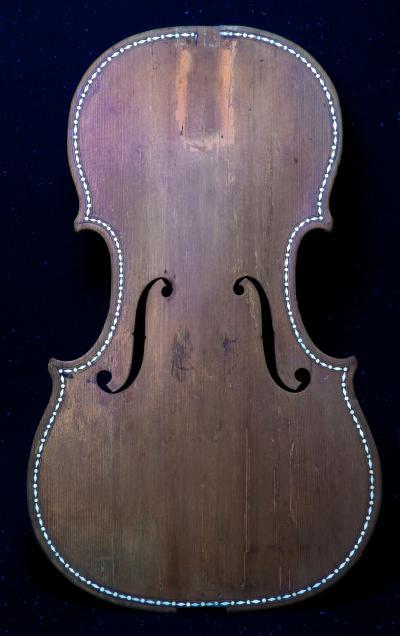Antonio Stradivari is universally recognized as the most famous violin maker in the world - if people can name one violin, it is his. During his life, he and his apprentices built more than a thousand violins, violas, cellos and other stringed instruments. The importance of Stradivari's work obviously lies in the craftsmanship, the quality of the materials used and the finishes on the instruments' surfaces. The sound of a violin is a result of the combination of the materials used e.g. wood species and varnishes, the construction technique and the skill of the maker.
So scientists have sought to duplicate that sound by reverse-engineering ways it could have been done.
A new study by Marco Malagodi from the Università degli Studi di Pavia in Italy and colleagues uses a range of analytical methods to identify the techniques used by violin master Antonio Stradivari in the 17th century, and attempts to replicate his craftsmanship. They used a range of different diagnostic techniques to identify the characteristics and composition of the materials in an original violin top plate, made by Antonio Stradivari. They also studied surface coatings and decorations.

Scientists from the Università degli Studi di Pavia in Italy used a range of analytical methods to identify the techniques used by violin master Antonio Stradivari. The owner of the top plate is Charles Beare. Credit: Marco Malagodi and Claudio Canevari
Their analyses revealed the absence of varnish layers on the surface of the top plate as a result of extended and excessive restoring. They also identified the dye used for the black layers of the purflings - the ornaments that protect the junction between the sides and the back and soundboard - and the characteristics of the black and white elements of the decorations, which confirmed that Stradivari used ancient techniques of wood coloring.
The researchers then copied the top plate based on their discoveries, using materials similar to those identified on the original Stradivari. They carried out the same detailed analyses for comparison.
The authors conclude, "Our investigations have provided several important insights about the manufacturing techniques of Antonio Stradivari and allowed us to hypothesize about the recipes used by this violin master, or by his suppliers, to decorate his instruments. These findings represent an important step in the study of the materials used by violin makers during the second half of the 17th century in Northern Italy."
Published in Applied Physics A - Materials Science & Processing.




Comments